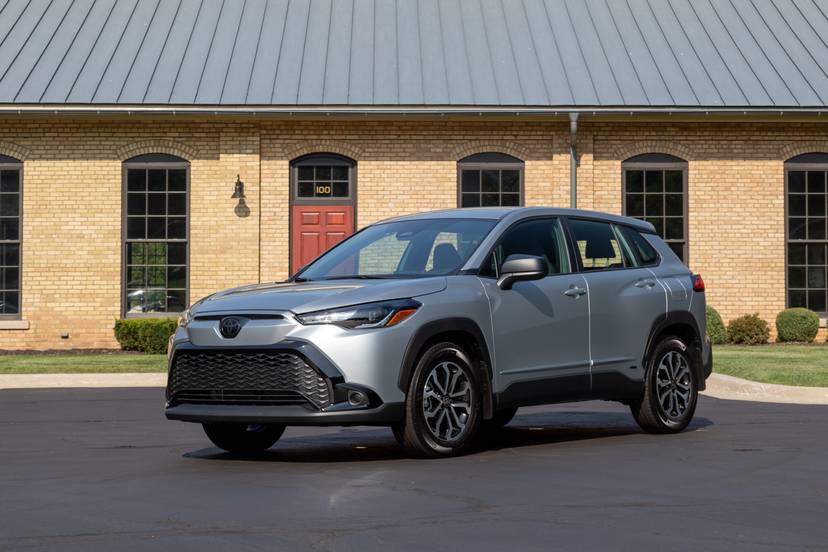
Verdict: With additional power from its new hybrid powertrain, the Corolla Cross Hybrid addresses the most significant issue of the gasoline-only Corolla Cross without otherwise messing up an already solid package.
Versus the competition: The Corolla Cross Hybrid strengthens Toyota’s position within the subcompact SUV class and gives buyers a quicker, more fuel-efficient option.
Toyota’s Corolla Cross subcompact SUV debuted for the 2022 model year, and we noticed two things straight away: First, it’s a mostly well-rounded subcompact SUV, but it is noticeably slow. Second, while it went on sale after our comparison test of major competitors, we think it would’ve done pretty well.
The Corolla Cross Hybrid aims to fix the first issue with a 27-horsepower bump, from 169 hp to 196 combined system horsepower out of its 2.0-liter gasoline engine and electric powertrain. Paired with Toyota’s electronically controlled continuously variable transmission, the Corolla Cross Hybrid comes in three trim levels: S, SE and XSE, letter combinations all associated with Toyota’s “sportier” offerings. All-wheel drive is standard on all trims — it’s optional on the gas Corolla Cross — and Toyota estimates 42 mpg combined for the hybrid. It also gets unique front and rear styling and black badging that I think looks quite nice, eschewing the blue accents Toyota usually puts on its hybrid vehicles.
Related: 2022 Toyota Corolla Cross Review: Safe, Simple and Slo
On paper, the Corolla Cross Hybrid is a massive improvement to an already good subcompact SUV, so I headed out to Southern California at Toyota’s invitation to get behind the wheel and see if it really is an improvement (per Cars.com’s ethics policy, we pay for our travel and lodging at such manufacturer-sponsored events).
Related Video:
We cannot generate a video preview.
Mostly Unchanged Interior — and That’s Good
The Corolla Cross Hybrid’s cabin is basically the same as the gas-only version. That means it’s comfortable, especially up front, and the controls are well organized. Unfortunately, the materials are also low-budget. The lack of quality was questionable in pricier grades of the gas version, and it’s a more glaring issue in the more expensive hybrid. It’s not a deal breaker, but the money you’re paying isn’t going to a nice interior.
Backseat comfort is unchanged, which means I lacked legroom behind the driver’s seat when it was in my preferred seating position but was fine in the other seat. As we noted with the gas version, three adults in the back may be a difficult proposition.
An 8-inch touchscreen display is standard and uses the latest version of Toyota’s infotainment system; we like it more than previous versions in older Toyotas, but it trails what can be found in Kias and Hyundais. Where the system comes up short is that there’s no home button, the screen only displays one function at a time, and services like navigation are cloud-based (read: need a data connection). Wireless Apple CarPlay and Android Auto smartphone connectivity are standard, though, which is very nice for the class. I had difficulty keeping my phone in place on the wireless device charger in the XSE version I drove, but that has been a problem with my phone and its case (an Otterbox Symmetry) in most flat or near-flat wireless chargers. The graphics match those on Toyota’s larger screens, but the icons seem downsized, making the physical screen itself feel small.
Quicker, Still Dynamically Good
Adding 27 hp more is just what the doctor ordered for the Corolla Cross; the hybrid’s stronger powertrain feels quick enough around town and adequate on the highway. Normally that’s faint praise, but here it’s a massive improvement. The gas-only Corolla Cross felt so slow we actually felt concerned for our safety. The engine is aggravatingly noisy, and the E-CVT has a rubber band feeling to it. You press the accelerator, the revs climb, and then the rest of the car catches on to what’s happening and accelerates. These are both qualities I’m willing to live with to drive a vehicle that actually accelerates when you press the accelerator pedal, even if it’s a little clumsy. I’m also willing to live with it getting anything close to the Corolla Cross Hybrid’s manufacturer-estimated 45/38/42 mpg ratings — the gas-only Corolla Cross is rated at 29/32/30 mpg with AWD and 31/33/32 mpg with front-wheel drive.
As the sportier Corolla Cross, the hybrid has a “sport-tuned” suspension. I’m wary of such descriptions when applied to non-sporty vehicles, as it could mean an unnecessarily firm ride. Instead, it remains smooth and composed, even with the XSE’s 18-inch wheels instead of the S and SE’s 17s. I thought it handled quite nicely on twistier stretches — for a subcompact SUV — and rode well over bumps with decent isolation. The Mazda CX-30 is a sportier option if that’s what you’re looking for, but the Corolla Cross Hybrid is much closer to the CX-30 than the gas version is. If, for some reason, you want an excessively sporty small SUV, go for the Hyundai Kona N — even if I am bitter that it spelled death for my own Veloster N.
Braking is another weakness of the Corolla Cross Hybrid. The brake pedal feels mushy, and it’s difficult to modulate; this isn’t new for hybrids, especially from Toyota, but driving this after the new Prius Prime and its comparatively excellent braking felt especially disappointing.
Both the hybrid and gas Corolla Cross are rated to tow up to 1,500 pounds. We thought the gas version would be a safety hazard as a tow rig, and despite the added power, I can’t really fathom using the hybrid to tow anything.
Lots of Features Still Standard
A strong suit of the Corolla Cross is its standard equipment, and it’s no surprise that the hybrid isn’t any different. Besides the aforementioned wireless Apple CarPlay and Android Auto, buyers get a host of standard safety tech as part of Toyota’s Safety Sense 3.0 suite. That includes adaptive cruise control with lane departure warning, lane departure steering assist and lane-centering steering, forward collision warning with automatic emergency braking and pedestrian detection, blind spot warning with rear cross-traffic alert and more. I didn’t go out of my way to test these features (you’re welcome, Toyota and fellow drivers), but in normal operation, they worked well and weren’t aggravating. The lane-centering steering — Toyota calls it lane-tracing assist — worked nicely without overly pinballing the car from lane boundary to lane boundary.
More From Cars.com:
- What’s the Best Affordable Small SUV?
- How Would the 2022 Toyota Corolla Cross Have Fared in Our Affordable SUV Comparison?
- 2023 Cars.com Affordability Report: Best Value New Cars
- 2023 Toyota RAV4 Hybrid Review: Good on Gas, Bad on Noise
- What’s New With SUVs for 2023?
Price Matters
That the Corolla Cross Hybrid is more expensive than the gas version is a given; what may disappoint shoppers, however, is that it’s really pushing into compact SUV prices. While the gas-only Corolla Cross starts at $25,695 with AWD, and a loaded model can easily eclipse $32,000, the Corolla Cross Hybrid starts at $27,970 without a destination fee; fully loaded, the price can climb into the $35,000 range, though that does include about $1,000 worth of cosmetic options like optional paint colors (Acidic Blast looks sick, though) and a two-tone roof to match the black badging. That would make the Corolla Cross Hybrid the most expensive vehicle in our last comparison by thousands, and for that money, you could get a nicely equipped Hyundai Tucson or Kia Sportage, for example. If you’re really thinking about going green, there are cheaper electric vehicles, too, like the Chevrolet Bolt EV and EUV; base versions of the Kia Niro EV and Hyundai Kona EV are priced similarly to a loaded Corolla Cross Hybrid.
The Corolla Cross Hybrid is the pick of the Corolla Crosses and a strong choice in the competitive subcompact SUV class.
Cars.com’s Editorial department is your source for automotive news and reviews. In line with Cars.com’s long-standing ethics policy, editors and reviewers don’t accept gifts or free trips from automakers. The Editorial department is independent of Cars.com’s advertising, sales and sponsored content departments.



























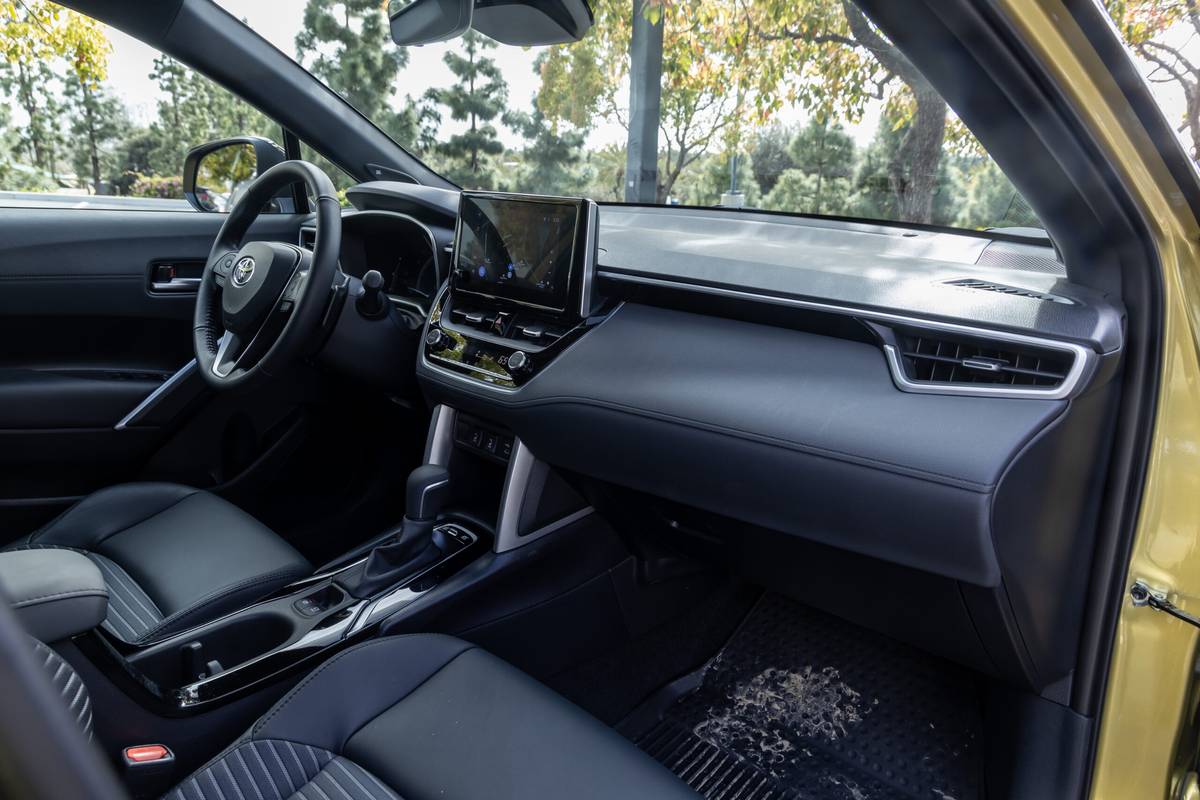
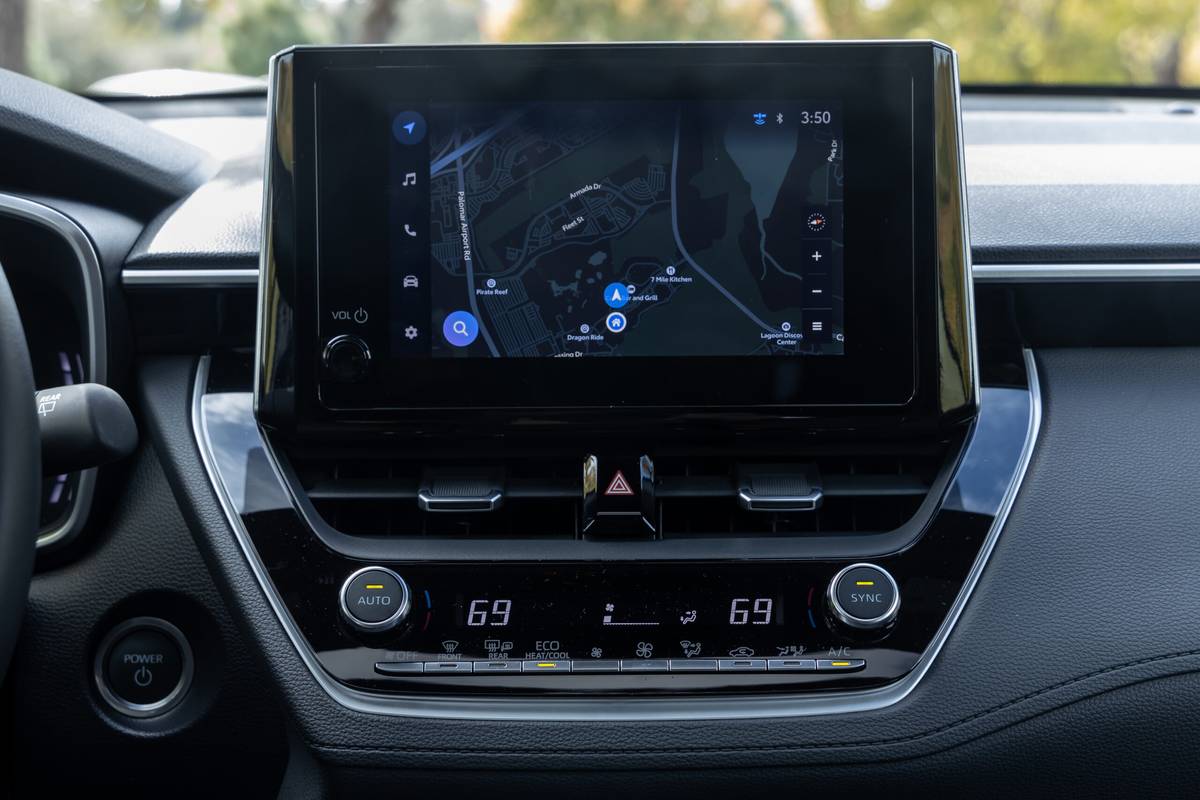

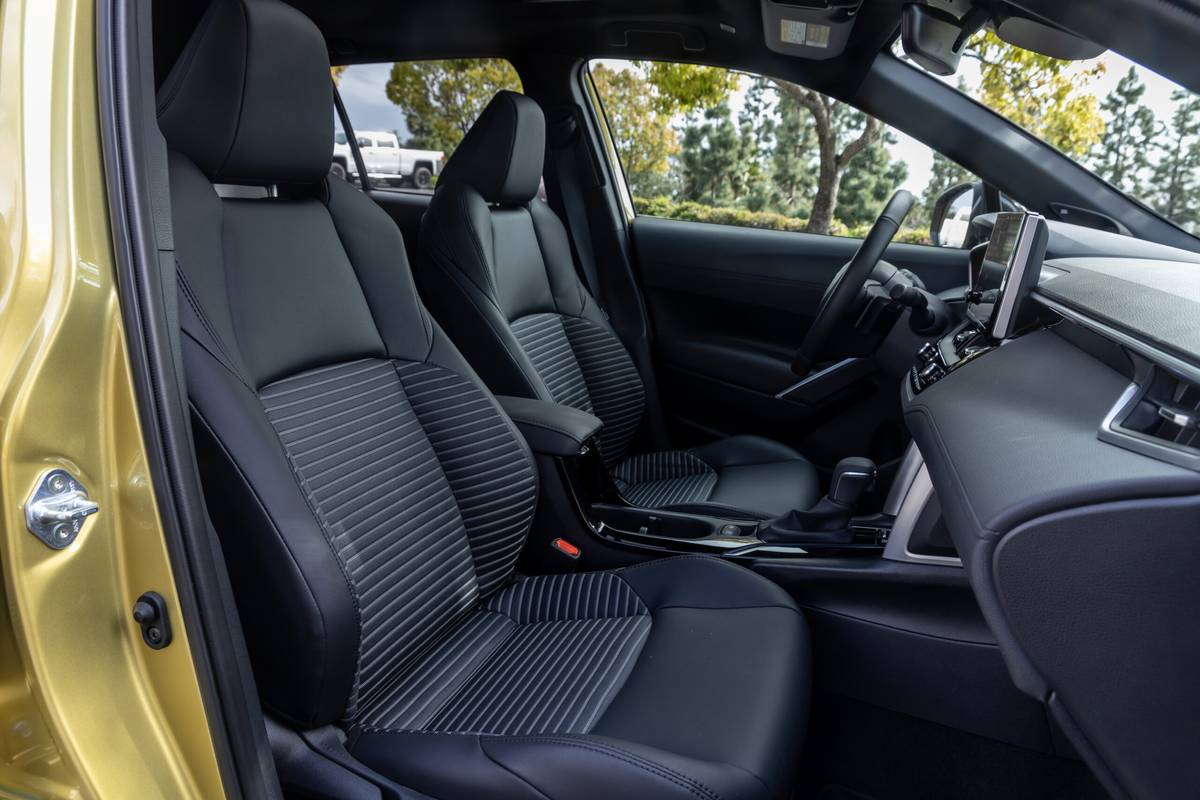
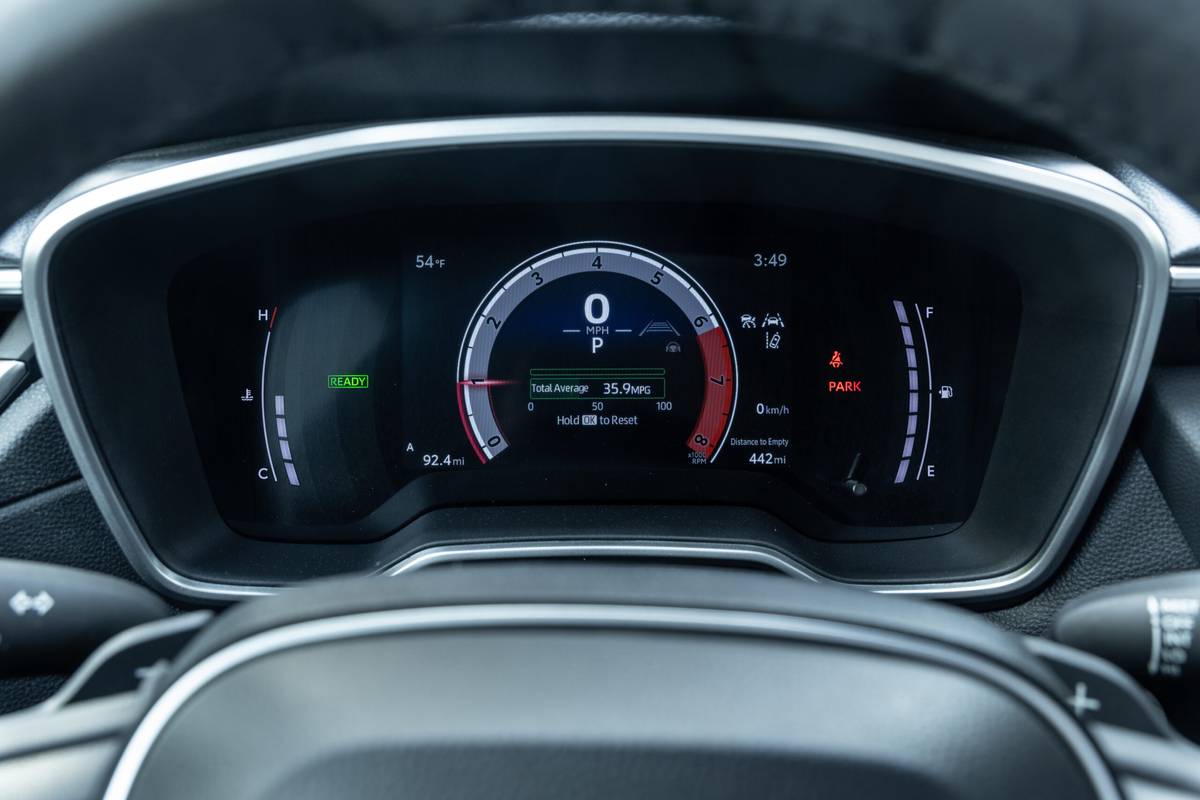
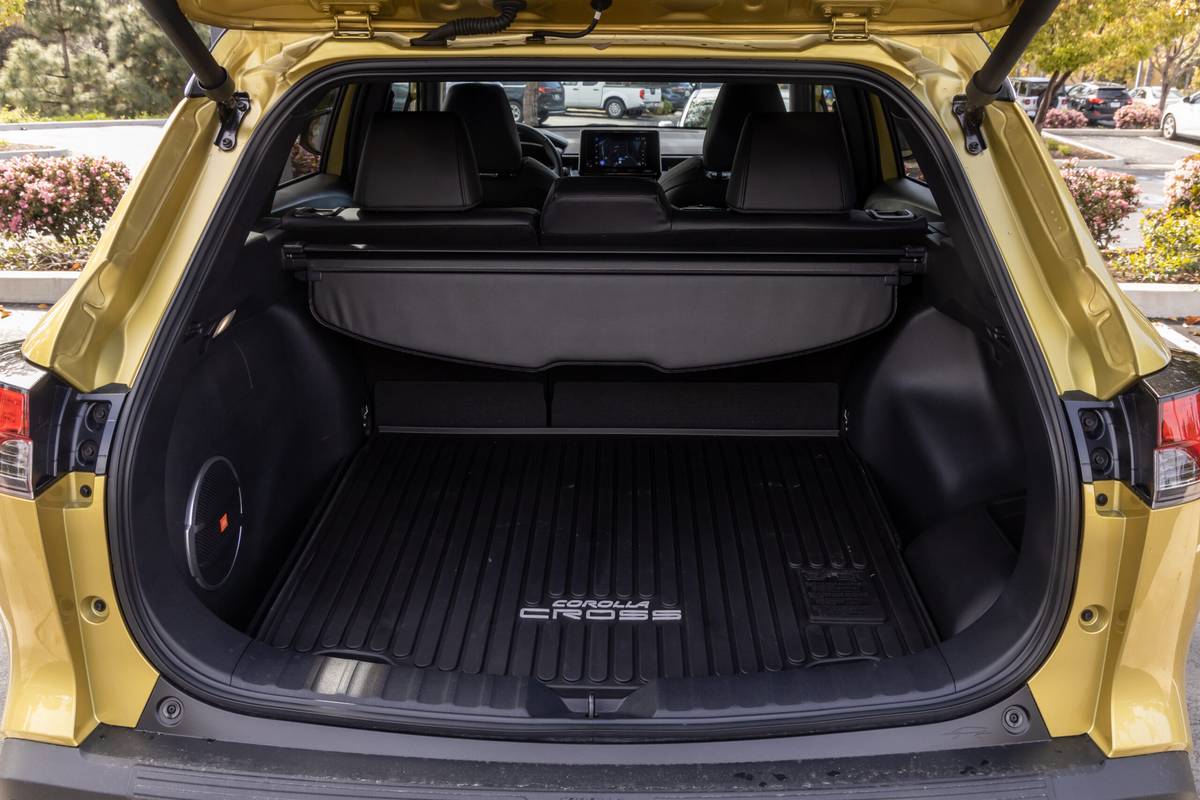
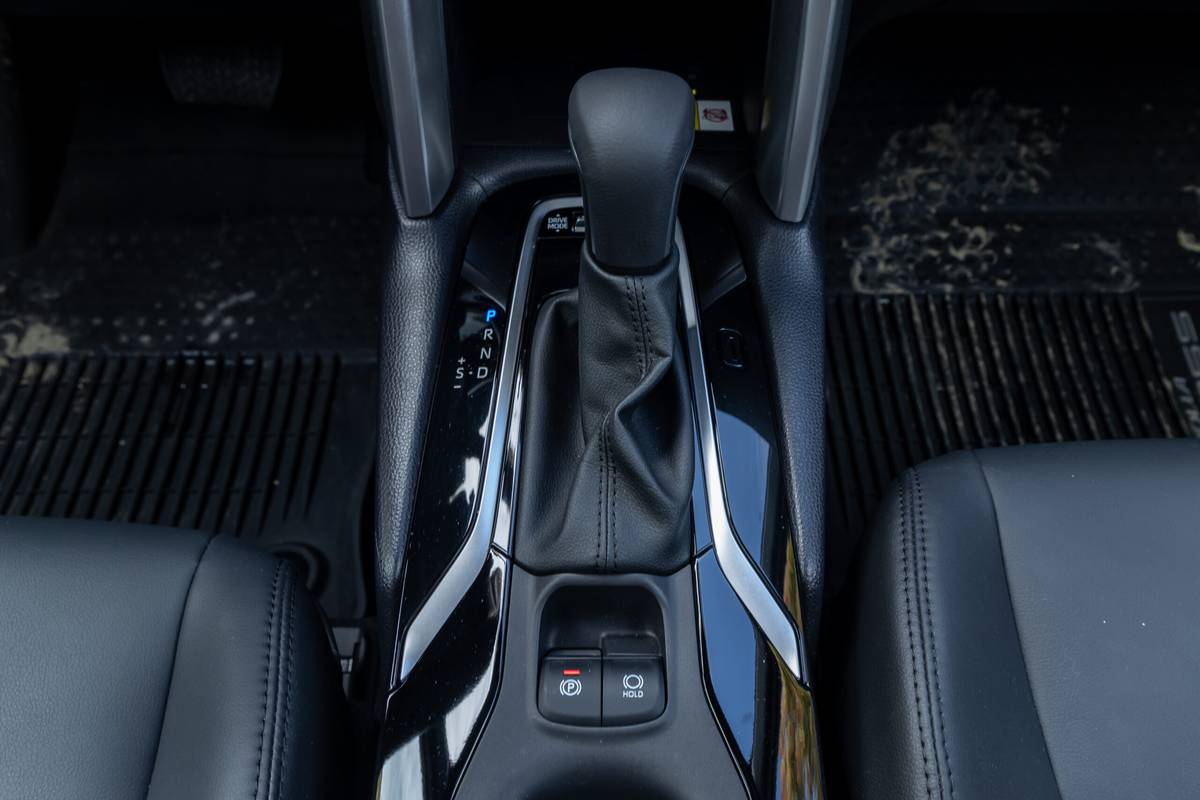
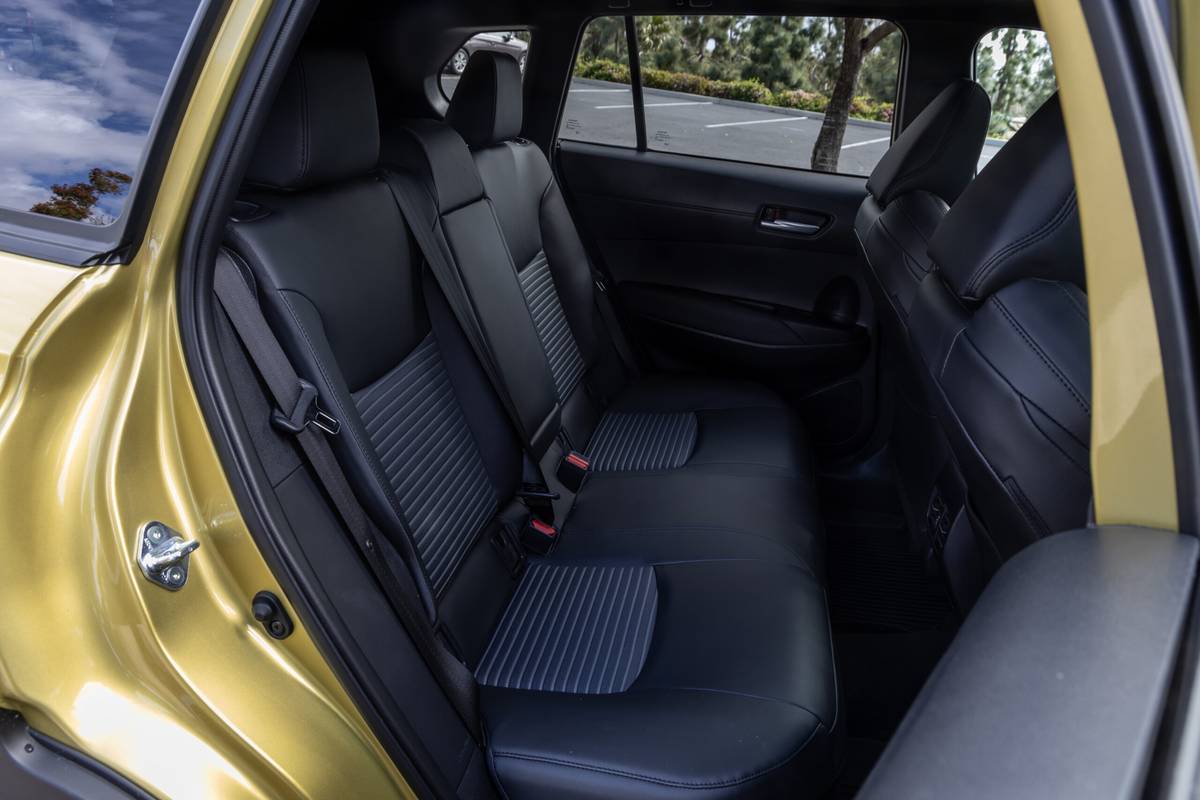
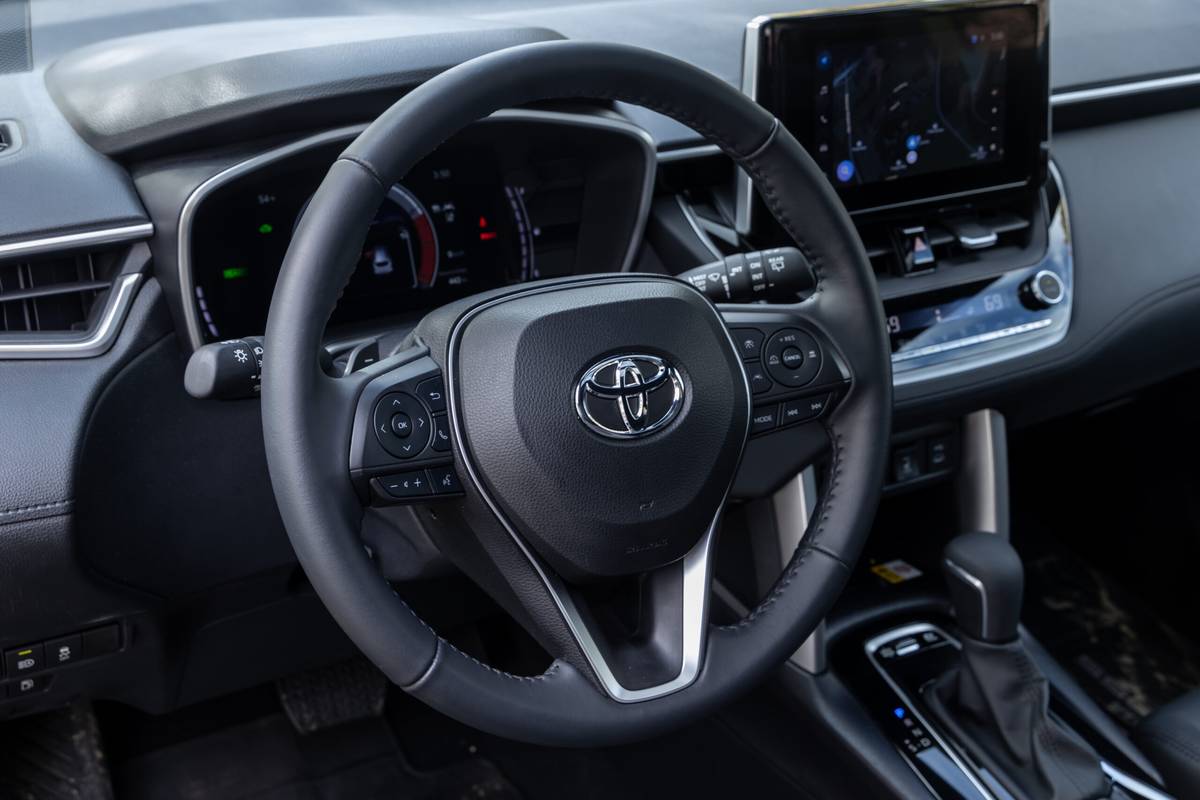
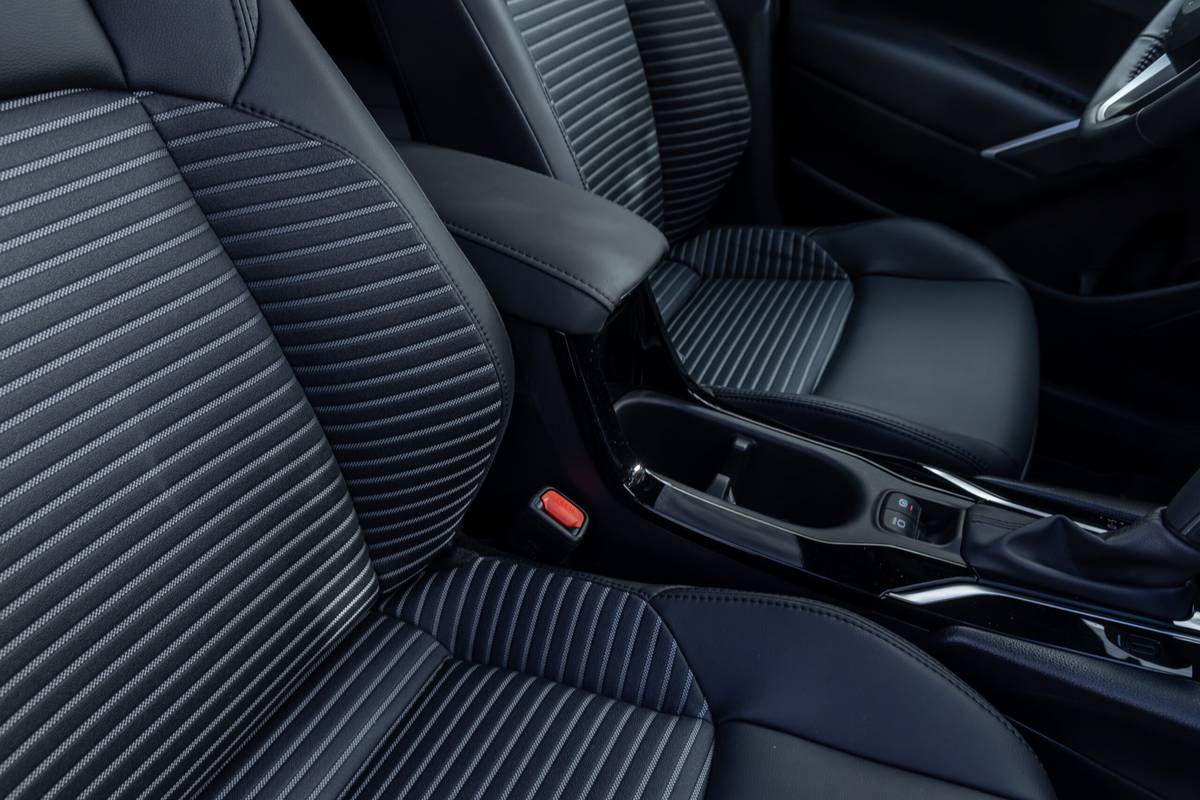
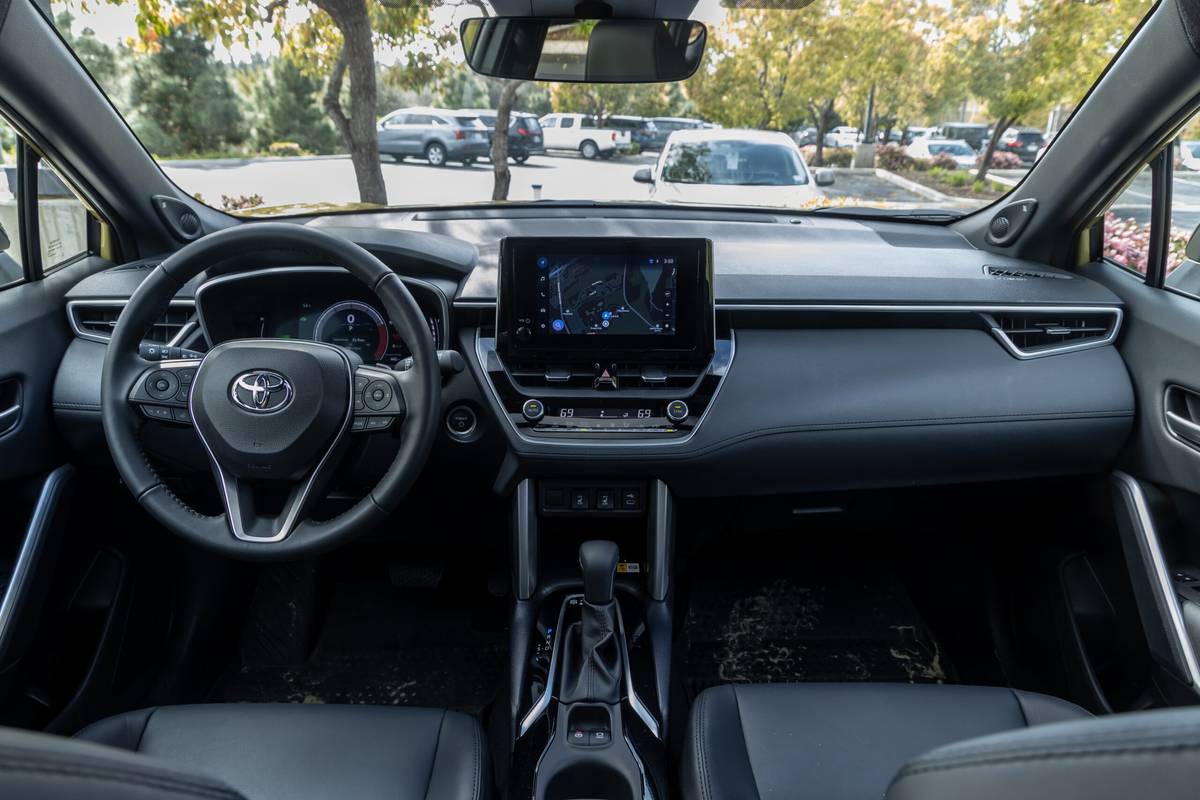
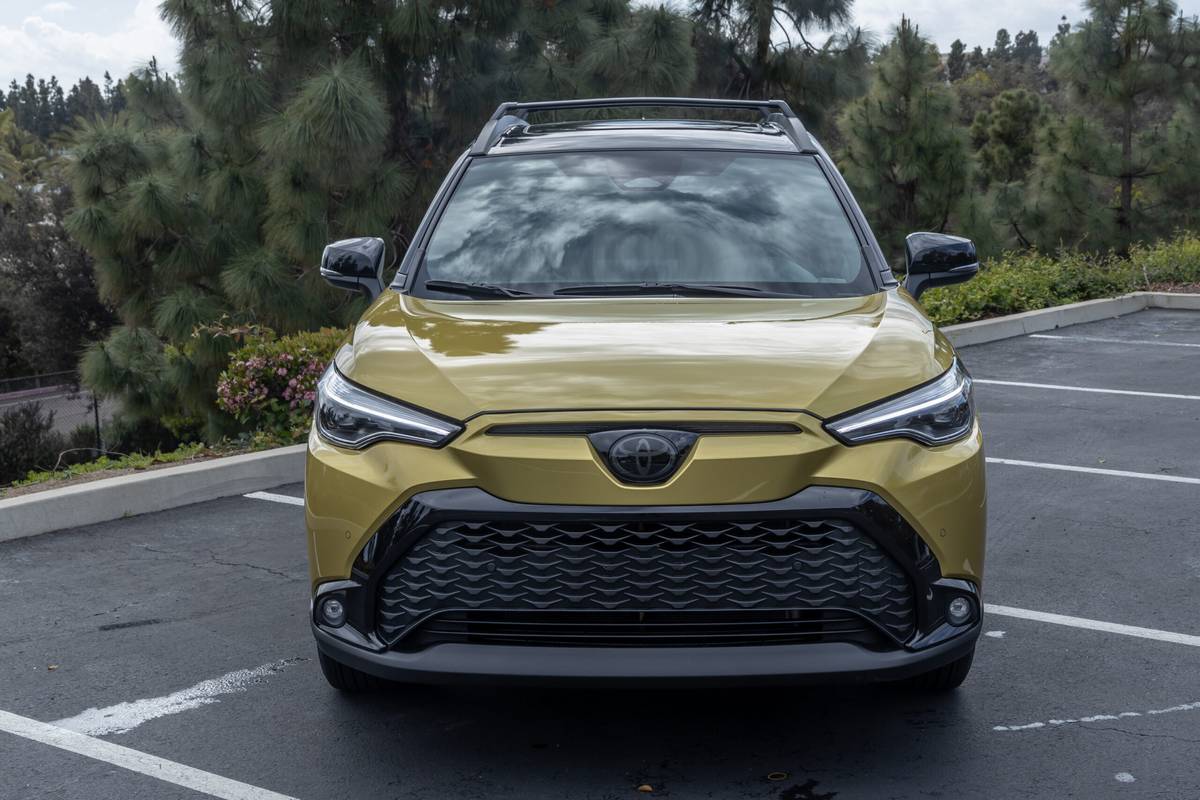
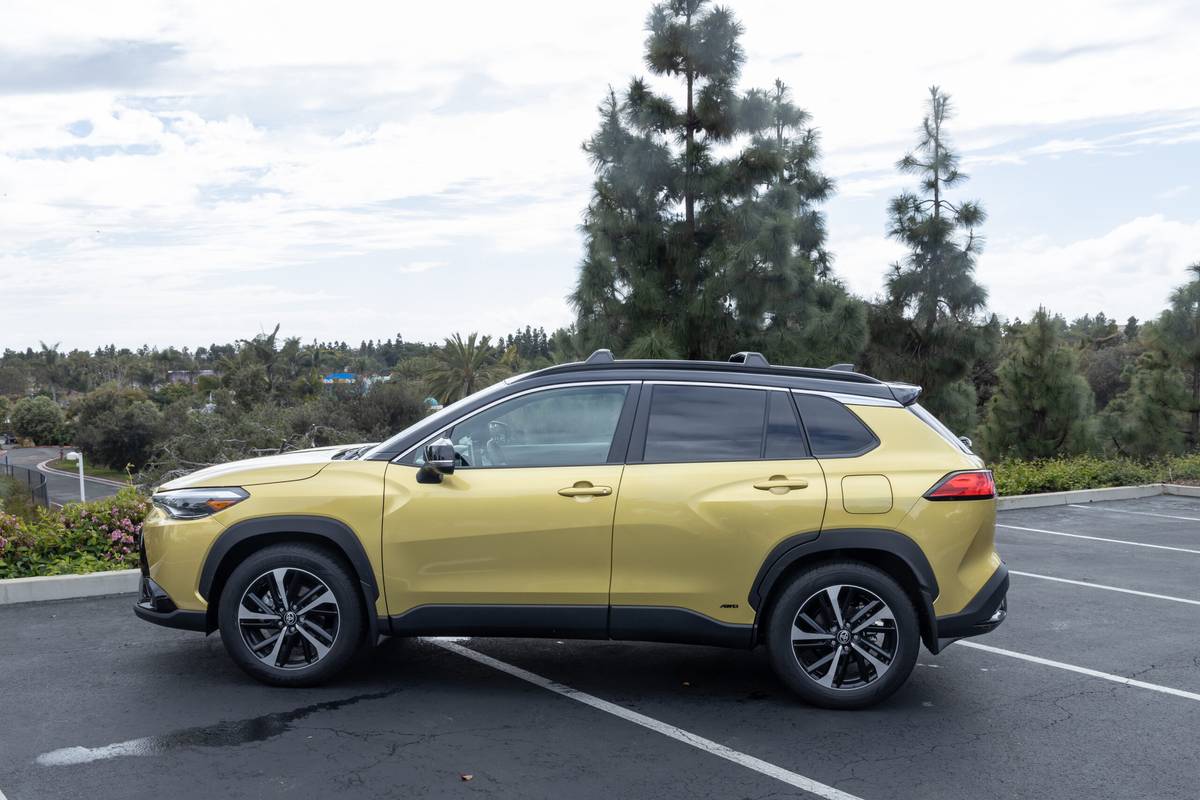

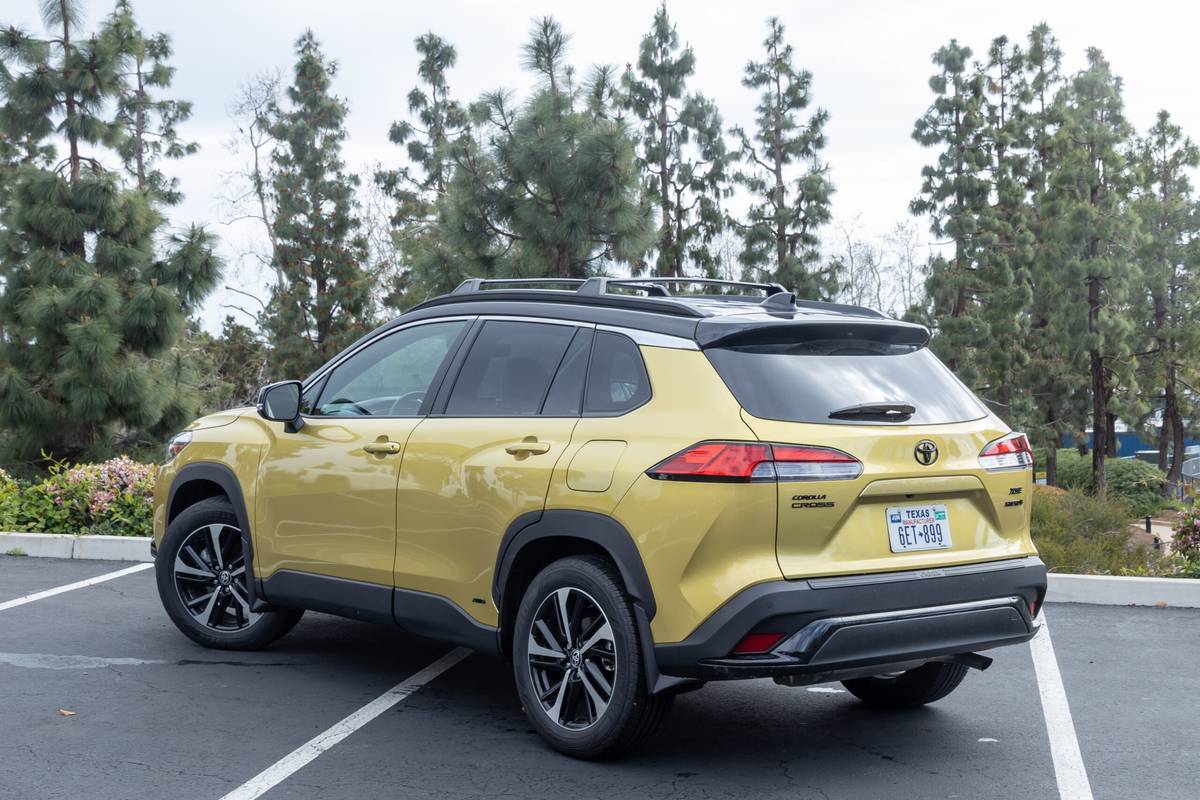

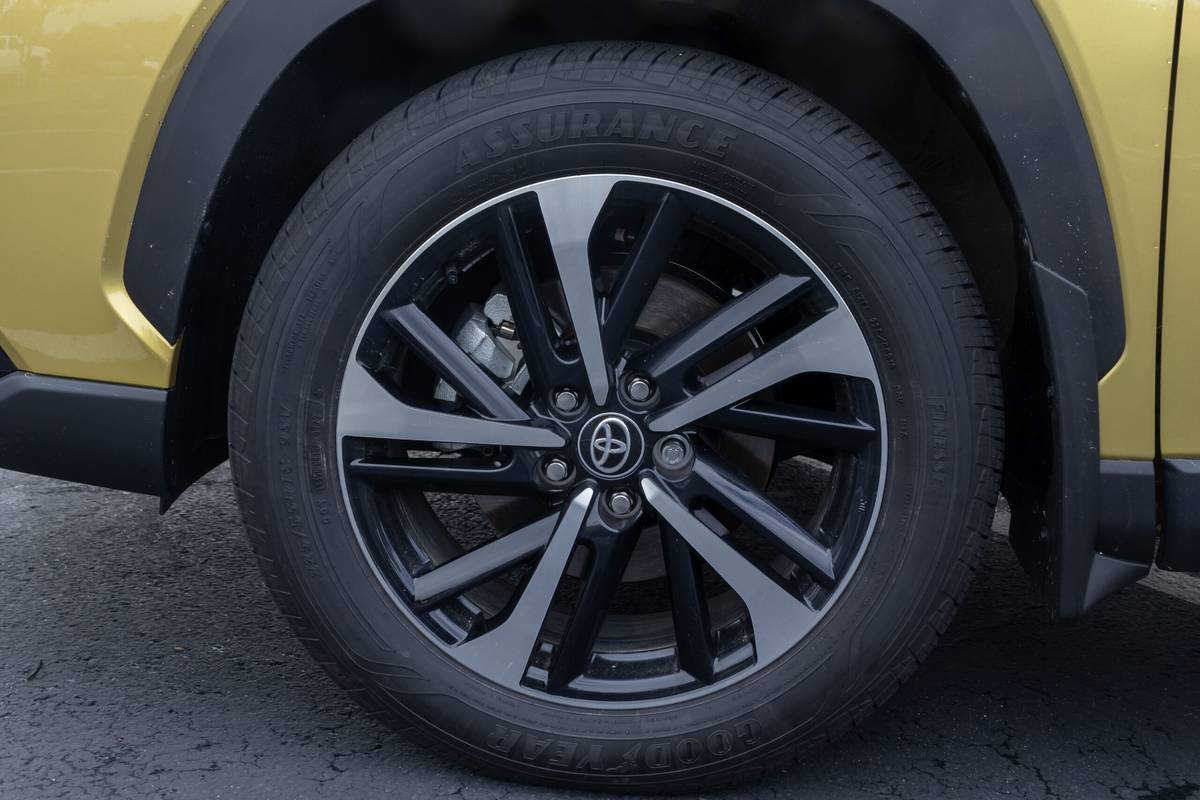

 Latch
Latch
 Infant
Infant
 Rear-facing Convertible
Rear-facing Convertible
 Front-facing Convertible
Front-facing Convertible
 Booster
Booster






